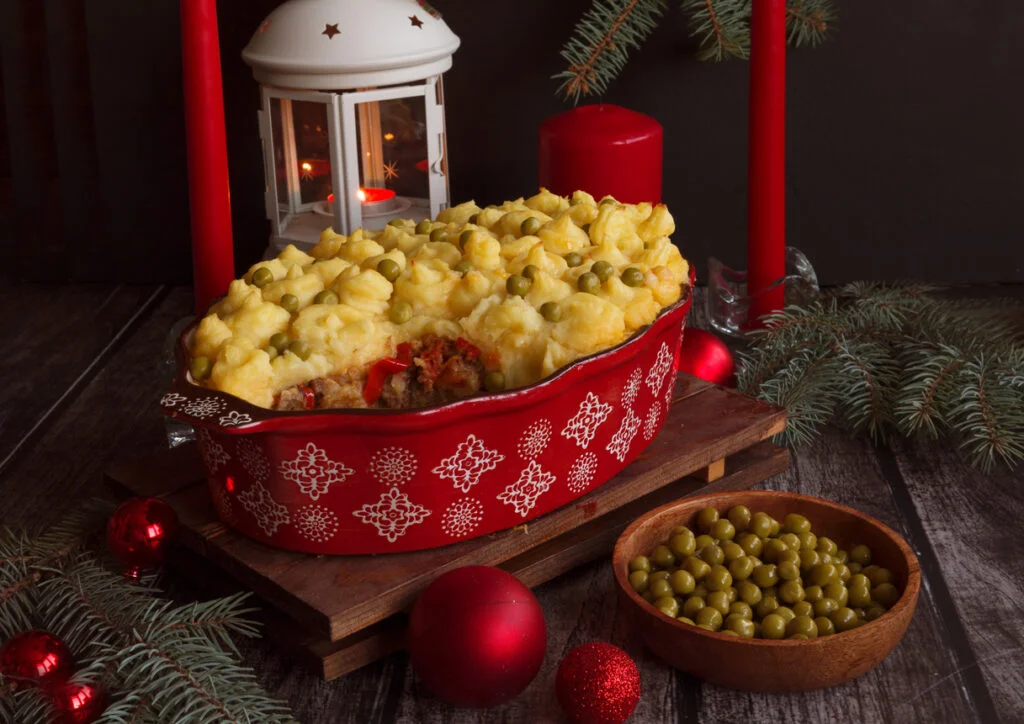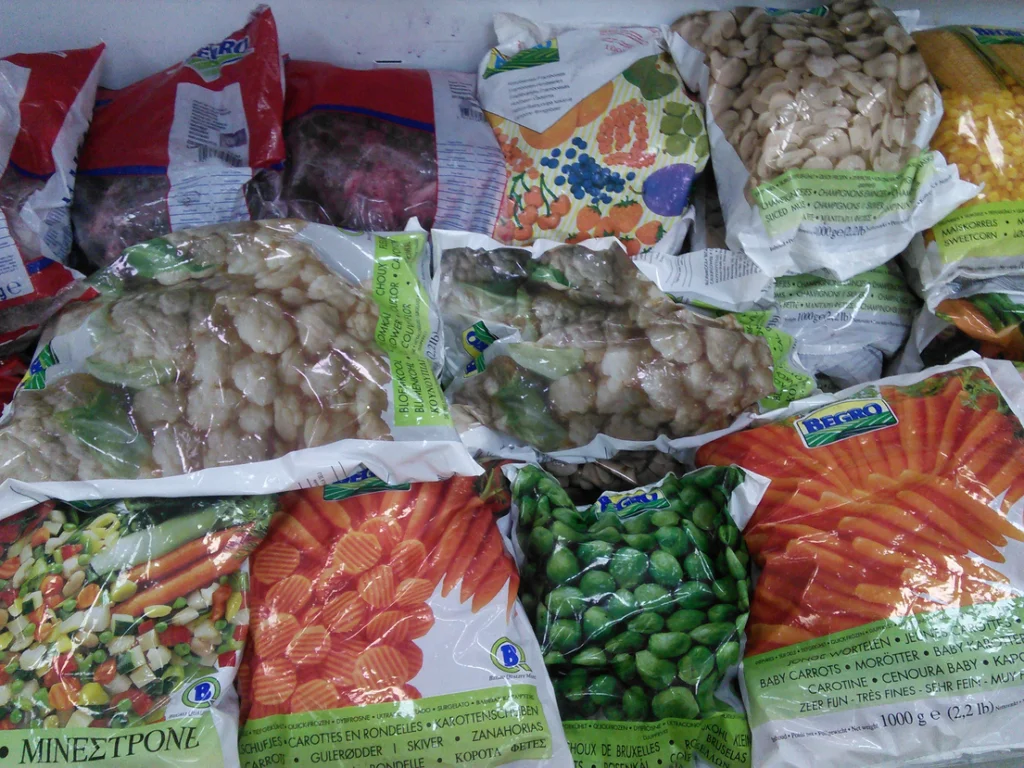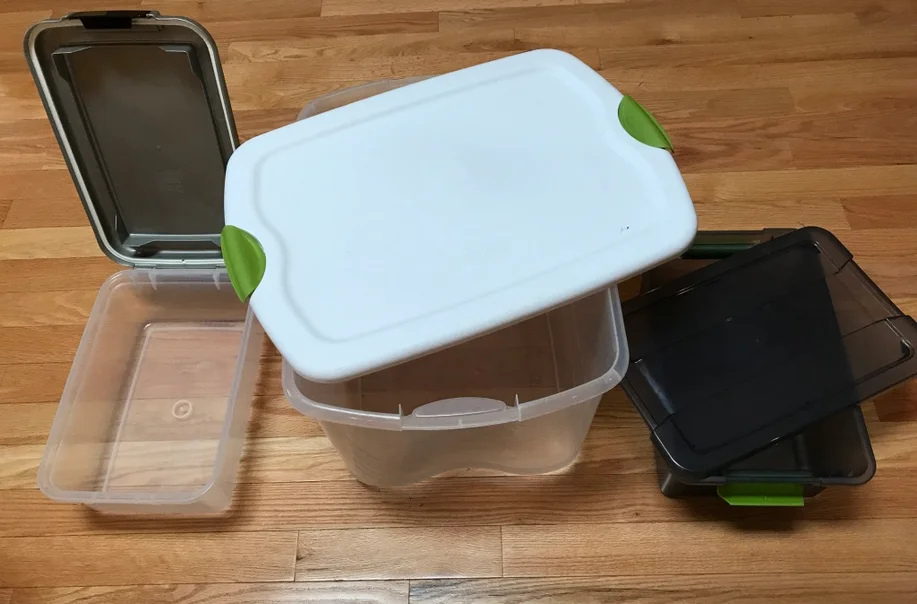The 1980s freezer was a mysterious place where good intentions went to die a slow, crystalline death. These were the days when throwing away food felt like a moral failing, even if that food had been transformed into an unrecognizable ice sculpture that bore no resemblance to its original form. Every family had their own collection of freezer fossils – items that had been pushed to the back corners and forgotten about until someone finally decided to brave the archaeological dig required to clean out the freezer compartment.
1. Wedding Cake Top from 1978

That carefully wrapped piece of wedding cake was supposed to be eaten on the first anniversary, but somehow it became a permanent freezer resident that no one had the heart to dispose of. The tradition seemed so romantic and meaningful that throwing it away felt like giving up on the marriage itself, even though the cake had long since turned into a brick of frosting-covered ice. Mothers would carefully rewrap it every few years when they reorganized the freezer, treating it like a sacred relic that must be preserved at all costs.
The cake top would accumulate freezer burn that made it look like it was wearing a fuzzy white sweater, but families would still move it carefully from one freezer to another during appliance upgrades. By the mid-’80s, these cake tops had achieved legendary status – too old to eat, too sentimental to throw away, too freezer-burned to recognize. They became conversation pieces during freezer cleanouts, with family members debating whether five years was long enough to constitute a successful marriage worthy of cake disposal.
2. Thanksgiving Turkey from Three Years Ago

Every family had that one turkey that was purchased on sale after Thanksgiving with grand plans for a future feast, only to be forgotten in the depths of the freezer until it became a 20-pound ice sculpture. The turkey would be wrapped in multiple layers of plastic and aluminum foil, creating a frozen fortress that made it nearly impossible to identify without archaeological excavation. Families would rediscover it during spring cleaning and debate whether it was still safe to eat, usually deciding to keep it “just in case” they needed it for an emergency dinner party.
The turkey would gradually migrate to the bottom of the freezer, where it would serve as a foundation for everything else that got stacked on top of it. Its massive size meant that removing it would require a complete freezer reorganization, which seemed like too much work for most families. By the time someone finally decided to deal with it, the turkey had become so embedded in the freezer ecosystem that extracting it felt like removing a load-bearing wall from the frozen food architecture.
3. Homemade Soup in Margarine Containers

Back when recycling plastic containers was considered innovative, families would save empty margarine tubs and fill them with homemade soup that somehow never got eaten. These containers would be carefully labeled with masking tape and a ballpoint pen, but the labels would eventually fall off or become illegible, leaving mysterious frozen cylinders that could contain anything from chicken noodle soup to last year’s chili. The containers would stack up like frozen Tupperware towers, creating an entire ecosystem of forgotten soup that no one could identify.
The soup containers would develop their own microclimate in the freezer, with some developing freezer burn that made them look like alien specimens rather than food. Families would occasionally discover these containers during freezer expeditions and spend several minutes trying to remember what they contained and when they were made. The decision to keep them was usually based on the assumption that soup doesn’t go bad and might be useful during a winter emergency, even though no one could remember what kind of soup it was supposed to be.
4. Birthday Cake from a Child’s Party

The leftover birthday cake seemed too precious to throw away, especially when it was decorated with the child’s favorite cartoon character or had been expensive to purchase. Parents would carefully wrap individual slices in aluminum foil, creating little frozen presents that would be forgotten until the next birthday party planning session. The cake would slowly accumulate ice crystals that made it look like it was decorated with edible snow, but families would still move it carefully during freezer reorganizations.
These cake remnants would become time capsules of childhood celebrations, with parents occasionally rediscovering slices from parties they’d forgotten about entirely. The frosting would separate from the cake during freezing, creating colorful frozen abstract art that bore no resemblance to its original form. By the time someone finally decided to dispose of it, the cake had become more of a family artifact than actual food, representing memories that seemed too important to throw in the garbage.
5. Freezer-Burned Ice Cream from 1983

That half-gallon of ice cream that got pushed to the back corner would develop a thick coating of ice crystals that transformed it into something resembling frozen chalk. The ice cream would become so hard that it required an ice pick to extract, and the flavor would be completely overwhelmed by the taste of freezer burn. Families would periodically rediscover these ice cream casualties and debate whether they could be salvaged by scraping off the freezer-burned layer, usually deciding to keep them “just in case” someone got desperate for dessert.
The ice cream containers would become archaeological markers of family dessert preferences from years past, with flavors that had long since been discontinued or forgotten. The containers would be dented and misshapen from being compressed under other frozen items, but the ice cream inside would remain stubbornly intact. These frozen dessert relics would occasionally be brought out during family gatherings as conversation starters, with everyone sharing memories of when the ice cream was actually edible.
6. Leftover Casserole from Christmas 1985

Holiday casseroles were too labor-intensive to throw away, even when they’d been sitting in the freezer for years after the last family gathering. These elaborate dishes represented hours of preparation and family recipes that had been passed down through generations, making disposal feel like destroying family history. The casseroles would be carefully wrapped in multiple layers of foil and plastic, creating frozen time capsules that preserved not just food but memories of holiday celebrations.
The casseroles would gradually lose their shape and color during their extended freezer residence, often becoming unrecognizable masses of frozen ingredients. Families would occasionally unwrap them during freezer cleanouts, trying to identify what they once were and whether they might still be salvageable for future holidays. The decision to keep them was usually based on the emotional investment rather than their actual edibility, with family members unable to bear throwing away something that had once been the centerpiece of a holiday meal.
7. Frozen Vegetables That Turned into Ice Blocks

Bags of frozen vegetables would somehow fuse together into solid ice blocks that required a hammer and chisel to separate, but families would keep them anyway because vegetables were supposed to be healthy. The bags would tear during freezing and thawing cycles, allowing the vegetables to escape and create loose frozen pea archaeological sites throughout the freezer. These vegetable ice blocks would become permanent fixtures in freezer organization, with other items arranged around them like frozen furniture.
The vegetables would lose all resemblance to their original form, becoming colorful ice chunks that looked more like abstract art than food. Families would occasionally chip away at these vegetable glaciers during cooking emergencies, but the results were usually so unappetizing that they’d end up back in the freezer for future consideration. The vegetables served as proof that the family had good intentions about healthy eating, even if those intentions had been literally frozen in time.
8. Homemade Bread That Became Frozen Artillery

Loaves of homemade bread would freeze solid into weapon-like projectiles that could probably be used for home defense, but families couldn’t bear to throw away something that had been made with love and effort. The bread would be wrapped in plastic bags that would split from freezing, allowing the loaves to develop a coating of ice crystals that made them look like frozen meteorites. These bread bricks would accumulate in freezer corners, creating a frozen arsenal of carbohydrates that no one knew how to use.
The bread would become so hard that it required defrosting time measured in geological ages, but families would still occasionally attempt to resurrect it for sandwiches or toast. The results were usually disappointingly soggy or rock-hard, depending on the defrosting method, but the bread would often end up back in the freezer because throwing away homemade bread felt like a betrayal of domestic values. These frozen loaves became symbols of good intentions and domestic ambition, even when they’d long since ceased to be edible.
9. Leftover Halloween Candy from Three Halloweens Ago

Bags of Halloween candy would somehow survive multiple trick-or-treat seasons, developing a white coating that made them look like they’d been dusted with powdered sugar but was actually freezer burn. The candy would be saved for “special occasions” that never seemed to arrive, or kept as emergency treats for unexpected visitors who never materialized. These frozen sweets would create colorful archaeological layers in freezer organization, with each Halloween’s candy marking a different era of family celebrations.
The candy would gradually lose its appeal as it aged, with chocolate developing white bloom and hard candies becoming mysteriously soft or impossibly hard. Families would periodically rediscover these candy caches during freezer expeditions and debate whether candy ever actually goes bad, usually deciding to keep it for future emergencies. The frozen candy served as proof that the family had successfully participated in Halloween traditions, even if no one could remember the last time anyone had eaten any of it.
10. Frozen Leftovers in Mysterious Containers

Every freezer contained several containers of frozen leftovers that had lost their identity somewhere between freezing and rediscovery, becoming mysterious frozen specimens that could contain anything from last week’s dinner to last year’s experiment. These containers would be carefully labeled with dates and descriptions that became illegible over time, leaving families to guess at their contents based on color and texture. The mystery containers would accumulate like frozen puzzle pieces, creating a guessing game that no one really wanted to play.
The leftovers would undergo fascinating transformations during their freezer residence, with sauces separating, vegetables becoming unrecognizable, and proteins developing textures that bore no resemblance to their original state. Families would occasionally brave these mystery containers during desperate dinner situations, but the results were usually so unpredictable that the containers would end up back in the freezer for future consideration. These frozen mysteries became conversation pieces during family gatherings, with everyone sharing theories about what they might contain and when they were originally made.
11. Ice Cream Cake from Someone’s Birthday Party

The leftover ice cream cake seemed too expensive and elaborate to throw away, especially when it had been purchased for a special celebration, but it would gradually transform into a frozen sculpture that bore no resemblance to its original festive appearance. The decorative frosting would separate and refreeze into abstract patterns, creating frozen art that was more interesting to look at than to eat. Families would carefully preserve these cake remnants, treating them like edible monuments to past celebrations.
The ice cream cake would develop its own microclimate in the freezer, with different layers freezing at different rates and creating geological formations of cake, ice cream, and frosting. These frozen dessert landscapes would occasionally be rediscovered during special occasions, with family members debating whether they could be salvaged for current celebrations. The cakes became symbols of family milestones, too meaningful to throw away even when they’d long since ceased to be recognizable as dessert.
12. Frozen Cookies from Last Christmas

Homemade Christmas cookies would be carefully frozen in decorative tins and containers, preserving not just the cookies but the memories of holiday baking sessions and family traditions. These frozen baked goods would accumulate like edible ornaments, creating a frozen archive of holiday celebrations that spanned multiple years. The cookies would develop freezer burn that made them look like they’d been decorated with edible snow, but families would still move them carefully during freezer reorganizations.
The cookies would gradually lose their texture and flavor during their extended freezer residence, but they retained their emotional value as symbols of holiday effort and family tradition. Families would occasionally rediscover these cookie collections during spring cleaning and debate whether they could be salvaged for current celebrations, usually deciding to keep them for future emergency entertaining. These frozen cookies became edible time capsules, preserving memories of Christmas mornings and family gatherings that seemed too precious to throw in the garbage.
Those were the days when freezer space was treated like a museum for good intentions and family memories, with each item representing hopes and plans that somehow never materialized. Maybe keeping all those frozen fossils taught us something about the difference between sentiment and practicality, or maybe it just proved that throwing away food was harder than living with the consequences. Either way, those freezer archaeological expeditions were a unique form of family bonding that today’s organized households will never experience.
This story 12 Things That Lived in the Freezer for Years in the ’80s Because No One Wanted to Throw Them Out was first published on Takes Me Back.


